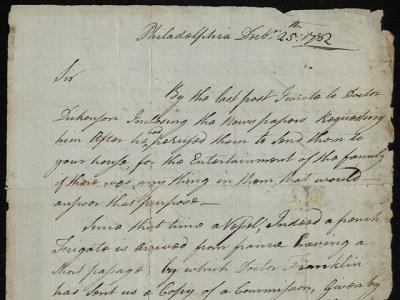Note From an Exiled Patriot

In July of 1776, William Floyd became one of 56 men to sign the Declaration of Independence. The 41-year-old from Mastic Beach joined the other signers in pledging his life, his fortune, and his “most sacred honor” for our liberty.
For most of the next seven years, the Floyd family would be separated by the war and William’s congressional duties. Following George Washington’s defeat in the battles for New York City, the British Army occupied Long Island, targeting families of the signers and rebel leadership. The Floyds were evacuated to Middletown, Conn., among hundreds of other patriot families seeking refuge. Many of them left Long Island from Sag Harbor, according to Frederic Mather, the author of “The Refugees of 1776 From Long Island to Connecticut,” published in 1916.
In May of 1781, William’s wife, Hannah Jones Floyd, became ill and died while still a refugee in Connecticut. British troops surrendered five months later at Yorktown, Va., but the war continued for another two years, with peace an uncertainty.
Despite all these struggles, William Floyd managed to write the letter, above, dated Christmas 1782, to his Middletown neighbor Thomas Dering (of Sylvester Manor), expressing hope for peace and the reunion of families. Though his latest news from Philadelphia is weeks old and unreliable, Floyd is optimistic that the American and British governments would proceed with peace negotiations. He also wrestles with false rumors of the British evacuation of Charleston, S.C., and promises to send Dering newspapers, as old news is better than no news at all.
Within a year of this letter, the British evacuated New York, allowing William Floyd and his remaining family members to finally return to their Suffolk County home. During their exile, the Floyd house in Mastic Beach was plundered, occupied, and trashed. Supporting American independence came at a steep cost for William Floyd. It was not all fireworks and parades.
Andrea Meyer is a librarian and archivist at the East Hampton Library.
